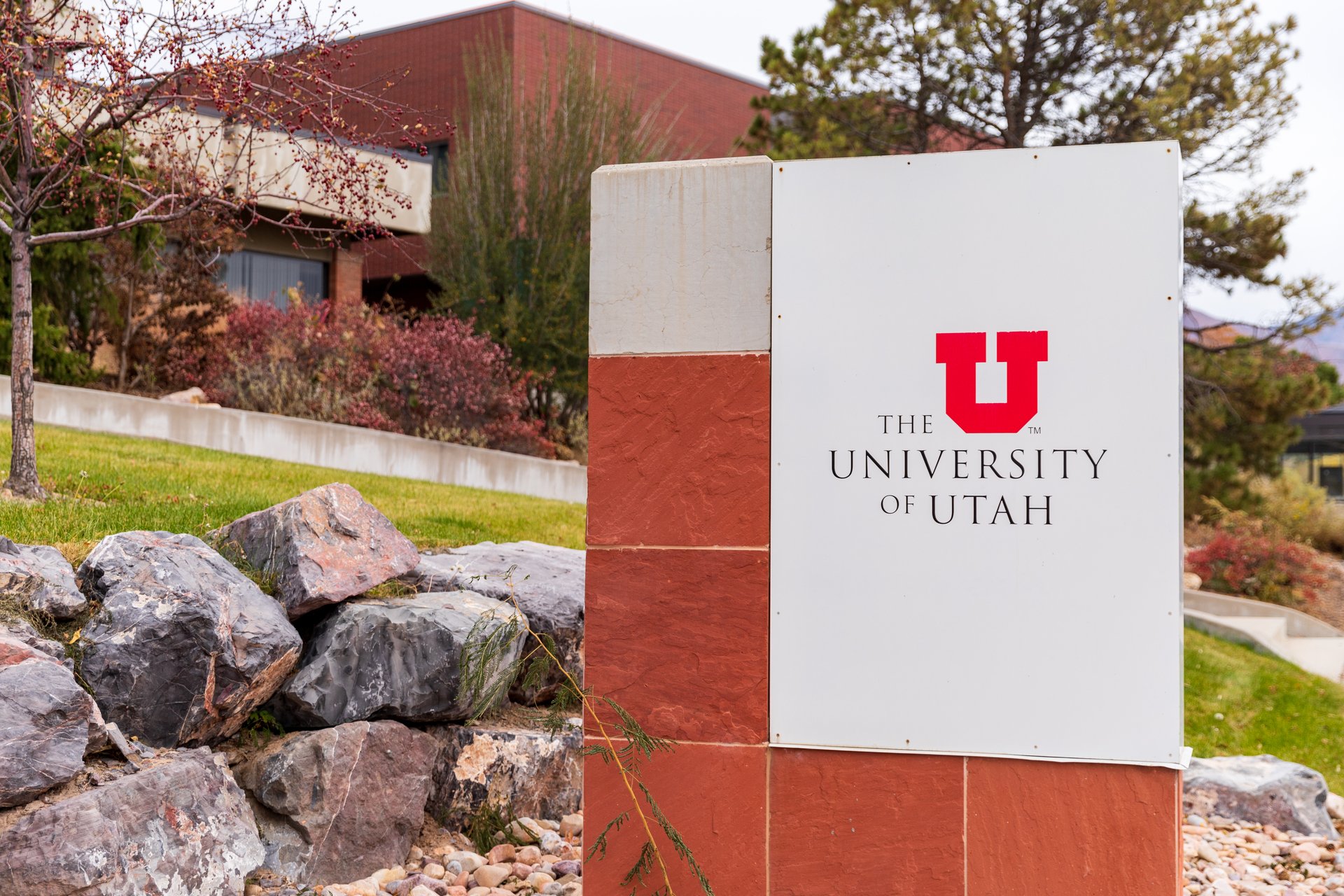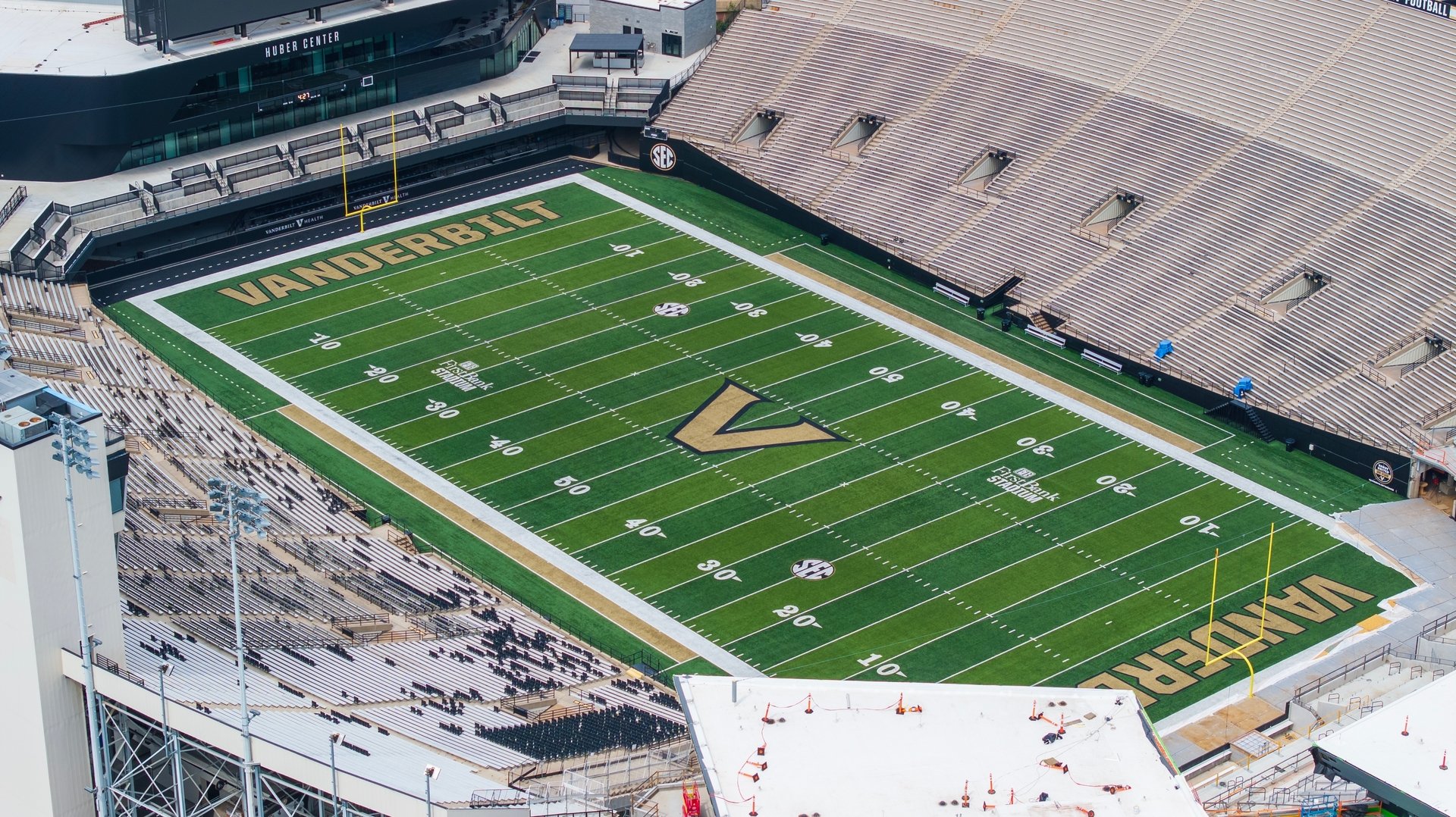Good morning, and thanks for spending part of your day with Extra Points.
A few quick housekeeping notes before we get to the interview today:
1) Our next community interview will be with Andrew Gemmell, who swam for the Georgia Bulldogs and Team USA, and is currently involved in swimming governance. He’s happy to take your questions about being a high-level D-I athlete, athletic leadership, the current state of the NCAA and the Olympic Model, how to swim the Butterfly without wanting to die after 50 meters, and more. You can submit questions via the comments, my email ([email protected]) or on our Discord Server. We’re going to skip next week and publish Andrew’s interview the week of the 30th, after Thanksgiving. I’m going to take a few days off next week and try to recharge a little bit. My tentative plan is to publish twice next week, instead of four times.
2) If you’re interested in being featured in an Extra Points community interview, please fill out this form. We have so many interesting voices who have reached out, and I can’t wait to share their expertise with our readership.
3) Hey, speaking of Discord, that’s one of the benefits you get when you subscribe to Extra Points. EP subscribers get four newsletters a week, and access to a chat room where you can submit questions, get to know your fellow Extra Points readers, and hang out with our friends at The Moon Crew.
Recent paywalled newsletters included stories on FOIA’d emails from Iowa State’s athletic department, ASUN conference expansion, 7x7 HS football in Vermont, the fight to restore sports at William & Mary, and more.
You can subscribe for just $7 a month, or $70 for the whole year. Extra Points is currently a 100% reader-supported publication, so these subscriptions are what keeps the lights on.
If you’re a teacher or professor planning for next semester, many schools are using Extra Points in their classrooms. I offer big discounts to schools that do this, so if you’re interested in how Extra Points might help your students, drop me an email.
Katie Davis, CPA, Partner, Higher Education and Collegiate Athletics Practice Leader at James Moore & Co. @KatieDavisCPA. Katie’s remarks have been lightly edited for clarity and length.
***
Let’s start with a few questions from me. What does "institutional subsidy" mean? Does that always mean a cash transfer? I see this term used a lot.
Katie Davis: It can be a cash transfer, but that is not always the case. Here are some examples: Student-athlete scholarships funded by the university, tuition waivers received by student-athletes, allocation of expenses for university employees not charged to the athletics budget but utilized by athletics, true cash transfers to cover operating expenses, and athletics expenses paid from university or foundation/booster club funds.
You did a good job explaining this dynamic in your article earlier this week, outlining that some of the Clemson track revenue wasn’t actual cash, and how the reporting can be misleading. Disclaimer: We do not work with Clemson, so what I know about that situation is what I’ve read in the media just like everyone else.
What can a layman learn, and NOT learn, from reading an FRS report, or the itemized athletic budget breakdown that every school has to submit to the NCAA?
Katie Davis: What you can learn:
Major sources of revenues and expenses,
Athletics debt, endowments, and capital expenditures,
Ticket sales trends,
Revenues received from their conference, NCAA, TV or sponsorship deals, etc.,
Trends in coaching salaries, scholarship expenses, recruiting expenses, etc.
What you can’t learn:
The true financial outlook of an athletics program.
Apples to apples comparison between two different athletic programs.
You can’t take one school’s FRS and compare it to another school. There are too many things subject to interpretation. Every school is unique in how funds are handled, timing of when transactions are recognized, and advice they’re getting for how to report items. Even schools that are seemingly very similar, in the same conference, with very similar donor bases, facilities, and athletics success on the field, will look very different when comparing their FRS. Very rarely is it apples to apples. Some have called it tomato/tom-ah-to, but in some cases it’s like comparing apples to rocket ships.
Hmm, that’s a lot that you can’t really learn. If you could change one thing about NCAA financial accounting, what would it be?
Katie Davis: There needs to be better standards and principles-based guidelines, and adding a balance sheet will help provide more uniformity.
For example, because there is no balance sheet, when an institution loans athletics funds for operations, it’s considered revenue. So, in this case, the NCAA is attempting to make this apples to apples by reflecting cash coming in as direct institutional support, regardless of whether there are repayment strings attached. What’s missing is the linkage between when they receive the money and when they pay it back when it’s a loan situation because there is no balance sheet.
Another example is that capital expenditures are frequently mistakenly double-counted as both an expense (usually in direct overhead or facilities) and in capital expenditures because the NCAA guidelines aren’t clear. Another weird example is with contributions, where schools only recognize what is used, not necessarily everything received if it’s not all used in the same year. Another example is that conference distributions and media rights can get a little wonky based on how the conference and school allocates it.
Until that happens… When in doubt, we recommend contacting the NCAA. We frequently contact the NCAA on our clients’ behalf to get clarity and help with consistency in reporting.
Now, let’s turn the time over to some of our readers.
Reader Doug asks:
I'm a big Washington State fan. Our financial reports show a long-term debt that the athletic department owes of nearly $100M, and they keep failing to meet their plans to pay that down. They remain heavily outgunned, financially, by their Pac-12 peers. Is this situation as dire as I'm lead to believe from reading these reports? Is Washington State pursuing a fool's errand that could hurt the school financially, or are things not as bad as they look?
Katie Davis: I think it is important to remember that nearly every program in the country has some form of debt, so while $100M sounds like a lot, it’s important to put that into context alongside other Pac-12 peers as well as other Power 5 schools. Each school has its own philosophy when it comes to leverage and the mix between debt and fundraising. The terms of the debt are important to understand also (interest rates, repayment periods, etc.) as well as what the annual debt service payments amount to and whether they are manageable or not.
For better or for worse, the arms race in collegiate athletics has forced schools to take on debt as they look to make facilities improvements that allow them to keep pace with their peers. Some debt may be easier to justify, depending on the ROI. If you are borrowing to pay for improvements to the stadium that allows for increased premium seating that you are then able to sell, you will see a positive return on that debt. Other debt, however, that may pay for non-revenue generating facilities should be scrutinized more carefully.
Also, I will preface by saying that we don’t work with Washington State, and if we did, we wouldn’t divulge any information that they don’t already make publicly available. As I noted above, there are flaws in the financial reporting model schools must follow, and it’s hard to make an accurate assessment of a specific school without looking at a full balance sheet and income statement (NCAA reporting is severely limited in this regard).
However, looking at their last three NCAA FRS reports which are made available on their website, their debt has decreased every year since 2017, and their revenues have increased every year since 2017. Additionally, the program does not receive a significant portion of its revenues from the University (less than 8% of total revenues have come from Direct institutional Support or Student Fees every year since 2017.) It’s hard to understand the full story of an athletics department by looking at the NCAA financial reports, but I don’t think things are as bad as they may seem based on your question.
Reader Jason asks:
Is there a chance in the future that non-NIL related benefits, from scholarships to training table to other assistance, could be taxed? Why or why not?
Katie Davis: Not likely. There would have to be legislative changes to tax law for scholarships and other benefits to be taxed across the board, not specific to athletes, but for all students eligible for that type of assistance. I don’t anticipate that taxation of student financial aid is a priority of the federal government at this time.
Katie Davis: This is a good question, which prompted me to call some of my clients to ask them how they handle it, so thank you for opening up my curiosity. There’s no single answer, but everyone I talked to responded saying everyone covers their own costs. Not only would that cover the visiting team’s travel costs, but also the home team’s hotel and other pregame costs.
Schools are also being strategic right now in their agreements with travel vendors to allow for last-minute changes. And the vendors have been pretty understanding with this because they know it will help their long-term relationships to be flexible right now.
Now when you’re talking about losing a game guarantee due to the host school having to cancel, it gets a little trickier. The cancellations happening now are generally within the conference and there’s no guaranteed contract. For pre-season cancellations, you’d have to look at the contract and subsequent action following cancellation.
Reader: AJ asks:
what is the viability of FCS teams moving up to FBS using the Liberty approach (i.e. going Independent after a waiver; threat to sue optional)? What sort of institution would benefit financially from such a move?
Katie Davis: This is a unique situation. It has worked well for Liberty, but it is a risky move and I don’t feel most FCS programs are in a position to do it, especially as an independent. To be independent, you need to be like a Liberty, Notre Dame, or BYU. The common threads in those three institutions are their religious backgrounds, a huge national backing, and a history of money to support infrastructure like stadiums, the ability to pay guarantees to the schools they play, and things like that. The support you’d have to have from the institution to go through that is significant.
FCS to FBS conference realignment is also very tricky, and the financial viability will be unique to the individual school looking to make the switch. You’d first have to be an FCS school that is attractive enough for an FBS conference to want to bring you in. Then you’d have to assess the financial and non-financial benefits and costs for making the switch – considerations should be made to student-athlete experience, geographic area of competition, competitive advantage on the field, benefits the conference offers (i.e. media rights, bowl distribution allocations, other conference-wide contracts that might provide financial advantages). I’ve seen some FCS schools move to FBS and struggle financially, but that’s not a move that can easily be unwound, so a school’s AD and President really have to think it through and be prepared for the unintended consequences.
Reader Greg asks:
Which athletic departments actually transfer funds to universities to cover scholarships? And for which is it just foregone revenue for the central budget?
Katie Davis: The reader makes a good point, which I always remind others about regularly, which is that the flow of scholarships is likened to moving money from one pocket to the other. Again, there is no one size fits all answer here and it depends on the institution.
My firm has worked with many schools in which athletics fully pays for scholarships and others where scholarships are primarily funded by the university. While this is not always the case, you can use the NCAA FRS Report to compare direct institutional support revenues to athletic student aid expenses. If athletic student aid is higher, then the athletic department is most likely paying for at least a portion of scholarships. The reason why I said you may not always be able to rely on the NCAA FRS Report to make this determination is that while 99.9% of schools get the student aid expenses correct, the corresponding revenue buckets are subject to interpretation. We always advise using direct institutional support to capture this, but we don’t have the privilege of working with all D1 institutions, so others may handle it differently.
Different Reader Greg asks:
Are there requirements for third-party audits for athletic departments? I know some schools have athletics organized under a 501(c)(3), so they must release annual audits, but I don't think that's common.
Katie Davis: Yes, in some instances athletic departments have become their own 501(c)(3) organizations. Off the top of my head there are multiple in Florida, Georgia, Kansas, and elsewhere -- maybe around 15 nationwide, so being an association is not common. The annual audit requirement is not a 501(c)(3)-specific requirement but is usually driven based on university or state requirements, and generally, we see that they are audited when they are organized separately. 501(c)(3) entities are also required to annually file Form 990 with the IRS, which provides a lot of information about their tax-exempt activities.
When athletics is a department of the university, the department is rolled into the university’s audit so generally there is no separate audit unless specifically requested. Regardless, all D1 institutions require an annual NCAA agreed-upon procedures performed by an independent accountant focused on the NCAA FRS report. You will notice that there are differences between an association’s audit and it’s NCAA report because of the financial framework differences between U.S. generally accepted accounting principles and NCAA FRS reporting requirements.
Okay, this is my newsletter, so I get the last question.
If there is one thing you'd want to convey about college athletics financials that you think gets misconstrued by the general public, what would it be?
Katie Davis: My biggest pet peeve is the negative connotation that the media portrays about college athletics finances, making it seem like athletics departments are frivolous and irresponsible. Yes, the market for coaching compensation has increased significantly. At those same schools, revenue has also increased significantly over the same period of time. If you graphed it out, you’d see those trend lines following the same path over the last 10-15 years.
Moreover, pre-COVID, the revenue model was shifting from a variable to a guaranteed model (unfortunately in a pandemic, nothing is guaranteed), with more revenue streams shifting from tickets and donations to media rights and sponsorships.
Athletics departments are doing the right things by making smart decisions to support their student-athletes and the success of their programs, usually under pressure from donors to be the best in the arms race. Yes, sometimes the decisions they make aren’t perfect (fill in the blank with any head coach blunder), but no one has a crystal ball.
Last year I was having a conversation with a Big XII AD and CFO about their frustration with the USA Today database that the media gets ahold of. The local paper told the story about how profitable their athletics program was right when they were launching a major capital campaign. What the news reporter didn’t report was the nuances I’ve laid out here, that revenue and profit aren’t what they seem, and that they needed the money, hence the campaign.
You and I had a great conversation about this during my podcast interview with you last summer about the importance of schools telling their complete financial story so that the people who matter (student-athletes, campus leadership, donors) understand the true picture of athletics finances and the value college athletics brings to the general public.
I really worry about the fiscal year 2020 NCAA FRS reports that will come out (which will be a long while from now) and what the media will say about those reports, knowing that a majority of the 2020 fiscal year was pre-pandemic, and uninformed assumptions will be made about the financial position athletics departments are in.
***
Friends, on that note, let me just say that I am but a humble writer with an average GPA from a state university. I am not an accountant, and that while I think I know my way around a spreadsheet now a teensy bit better than the average bear, I will probably make mistakes. All I can promise is that I will do my very best in this newsletter to be fair, precisely because an athletic department’s budget doesn’t really look like our family budgets.
You can support that effort with a subscription, right here:
Thanks again for your continued support of Extra Points, and for Katie Davis, for taking the time to answer our questions. Additional questions, comments, business inquiries, leaked financial documents, discarded conference realignment proposals and more can be sent to [email protected], or to @MattBrownEP on Twitter dot com.


















